
Area Rug Buying Guide: 6 Steps To Finding The Perfect Fit
The idea of adding an area rug to a room seems like a no-brainer at first, but it only takes a few minutes to become overwhelmed by the task. We’ve pulled together this step-by-step guide to help take some of the guesswork out of creating a perfect fit.
1. Define The Life Of Your Space
A rug can be an amazingly versatile piece of décor. Therefore, it’s important you carefully define the life of your space before you head out on your rug-buying journey.
How do you want your space to feel—calm, energetic, neutral? Bright and bold patterned rugs add instant color and energy which may draw the eye in and make the room appear smaller. Pale or neutral colors reflect light and add an airy effect and can make your room seem larger than it really is. Natural fibers and textures such as jute, sisal or seagrass may offer an understated coastal or farmhouse vibe.
If you’re unsure what color will work, write down all the colors in your space including the plants, lights and surrounding areas. You’ll soon notice that you already have a color scheme. Once you’ve established some basic color and style wants and needs, you’ll be able to focus your attention to determining the rug size your space requires.
2. Measure, Measure, Measure
Before going shopping, it’s important to know what size you’re looking for. First and foremost, you need to know how rugs are measured: length is always the largest measurement and the width is smallest. (Yes—it’s really that simple!) Round rugs are measured by diameter. Next you’ll need to decide on the area you want the rug to cover. This can be easily envisioned by placing masking tape on the floor to outline the entire area. This handy trick not only helps you envision the rug’s placement in the room, it makes it much easier to determine the exact size that will work best. Of course, each room has its own unique style to consider.
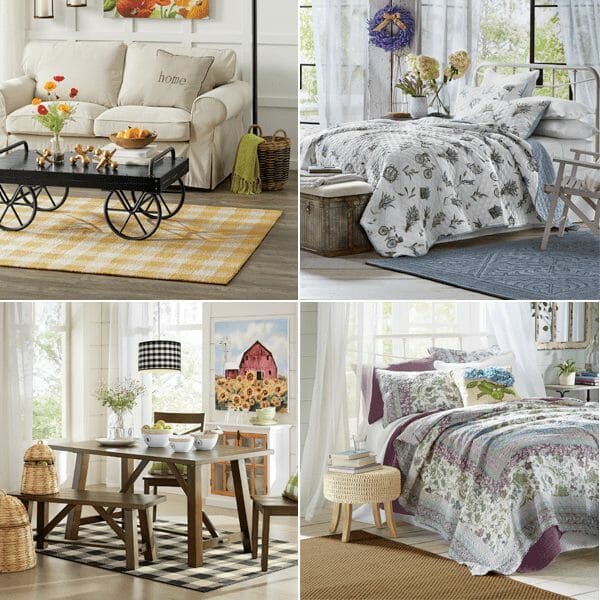
Living Room
- Keep uniformity so your selection appears deliberate: legs all off the rug, or all on. Another option is to place the front two legs of each sofa or chair on the rug. Whichever way you prefer, you’ll need to decide this ahead of time and measure accordingly.
- If you’re placing the rug in front of a sofa, make sure your measurements extend at least 6 to 10 inches on each side of it.
- Avoid having a rug end or corner in a doorway. Not only is this unappealing, it’s also a tripping hazard.
- When measuring for your rug, make note of the other dimensions that are a permanent part of your déor, such as a fireplace, doorways and windows.
Dining Room
- Rectangle or square table: measure the table and then add 54 inches to the length and the width. This will allow enough room for the chairs to be moved in and out without slipping off the rug.
- Round table: 48″ table = 6′ Round or 8′ x 10′ Rug
60″ table = 8′ Round or 8′ x 10′ or 9′ x 12′
- Leave at least 24″ of room between the backs of the chairs and the edges of the rug.
- Consider if the table has extending leaves. If so, you’ll want to choose a rug size to accommodate the table with or without them.
Bedroom
- Measure the bed, then add 24–36 inches to each side that is not against the wall. This way you have a rug to stand on while you put on your slippers.
- If you have end tables, try and extend the rug slightly past the end of the table. This will help frame the bed area.
- Another clever decorating trick—use runners on both sides of your bed to visually frame your bed as an alternative to a large rug.
Hallway/Entryway
- For an entryway, take careful measurements to ensure the rug frames the door or is centered in front of an entry bench or table.
- Measure your hallway and subtract no more than 12 inches from the width. This will allow up to 6 inch border of flooring to show all around.
- Showing more than 6 inches on each side of a hallway runner may result in a “landing strip” appearance. This is also a good practice to follow for carpeting steps.
Covering An Entire Room
- For average to large rooms (16 x 20 or more) subtract up to three feet from the total length and width. This will give you an 8 to 10″ border around the entire room.
- For small rooms (12 x 18 or less), subtract no more than 16 inches from the total length and width. Showing too much space around the edges will draw your eye in making the room appear smaller.
- Give yourself a 2-inch margin of error to avoid picking the wrong size.
Multiple Rugs In A Room
- If you want to use more than one rug in a room, be sure that they are not the same size, which tends to cut a room in half.
- Keep rugs in complementary styles to avoid any contradicting patterns.
Outdoor Patio Rugs
- If placing rugs on your patio, make sure they are durable and weather-safe. Avoid cotton or wool rugs.
- Make sure they do not slide or create a slipping hazard. Outdoor rugs should have a rubber or slip-proof bottom
- On small patios and in tight spaces it is generally better to use fewer, larger patio rugs than than multiple small ones.
- Outdoor rugs need to be cleaned and stored properly to ensure long life. For more information, check out these outdoor rug cleaning tips.
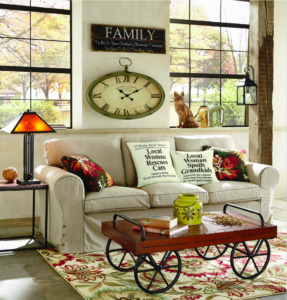
3. Know Your Rug Materials
Jute–rope-like construction is perfect for adding texture and a coastal vibe. Some jute is outdoor safe, but not all. Spot clean.
Wool–soft and cozy. Durable, cleans easy. High-quality material; exceptional for high-traffic areas. Spot clean.
Cotton–soft, natural, casual look. Less expensive than wool. Washable.
Coir–eco-friendly; made from natural coconut fibers. Rough texture is good for heavily soiled shoes. PVC-backed coir performs the best out of direct sun and rain.
Synthetic Fibers—gives the same luxurious softness as natural materials for a fraction of the cost. Common synthetic materials include:
- Polyester-can mimic the look of expensive wool rugs; resistant to fading, durable and affordable. Care can range from washable to spot clean.
- Polypropylene (nylon, olefin)-most popular materials; soft, stain resistant, durable and affordable. Repels stains and moisture and is often used in outdoor settings. Care can range from washable to spot clean.
- Viscose–can imitate the look and texture of wool, cotton, linen and silk. Does not stand up to moisture or liquids. Spot clean.
4. Do I Really Need A Rug Pad?
A rug pad can be a great thing—it can protect your floor, keep your rug from sliding, and the cushioning it provides feels pretty good on your feet (plus it may be easier to vacuum). However, in most cases, they are optional—and not something you have to lose sleepover. If you decide a rug pad is for you, here are some tips when shopping for one:
- A rug pad should be at least 1 inch smaller (all 4 sides) than your rug. This allows the edge of the rug to naturally taper to the floor, preventing a tripping hazard. Most can be easily trimmed if needed.
- The best rug pads are made from natural materials. Natural rubber and felt are the most popular choices. Felt has a great density to it, so a felt rug pad is helpful if you’re most interested in noise reduction. Natural rubber pads have glue-like grooves to keep your rug in place reliably.
- More affordable rug pad options are typically made with synthetic materials. You’ll want to make sure that it’s specifically made for an area rug on top of hardwood, tile flooring or other carpeting. The wrong pad will have an incorrect amount of petroleum in it and can harm the finish on your floors.
5. Changing Things Up With Layered Rugs
Because big area rugs have become costly and choosing the best size can often be challenging, you might want to consider layering an area rug on top. This technique can also highlight a seating area or create visual interest by adding a bright pop of color or texture on an otherwise unexciting rug. Layering a smaller seasonal rug over a larger rug lets you affordably create a fun updated look for every season.
To keep the top area rug from sliding or moving out of place, you can simply purchase a gripper pad and cut it to fit the size you need, or apply carpet tape around the bottom edge of the top rug and firmly press together.
6. Rug Size Guidelines
The rug industry lists rug sizes as “cut sizes”. Keep in mind, the actual size usually rugs run slightly smaller than the cut size. When inches matter, be sure to measure to make sure the rug you want will work for you.
Common Rug Sizes:
The area rug got its name because it is used to define a specific area of activity. Choose a rug of a size that fits your furniture grouping or space.
Small Rugs: 2′ x 3′ and 3′ x 5′. Best for slim corners, walk-in closets, nooks and crannies, front of sink and entryways.
Medium Rugs: 4′ x 6′ and 5′ x 8′: Best for separating spaces, entryways and layering over large rugs.
Large Rugs: 8′ x 10′, 9′ x 12′ and 12′ x 15′. Best for centering a room and layering under medium rugs.
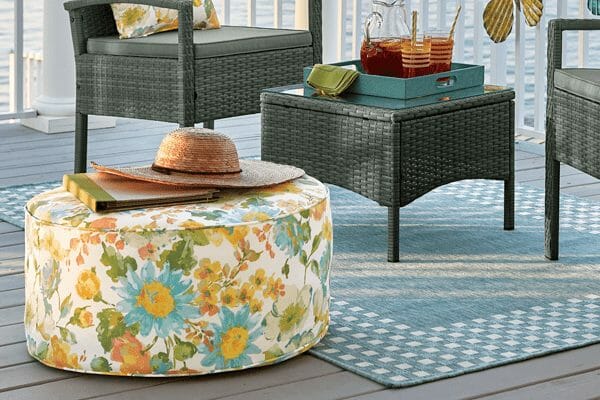
Congratulations! You’ve done the homework, found the perfect rug and now the exciting part—unrolling it to reveal your new look! Unfortunately, the excitement can turn to disappointment when it refuses to lie flat. No worries, it’s relatively easy to make the curled edges lie flat.
- Steam or dampen the edges: try using a steam cleaner on the areas where the curling is at its worst. The water will help loosen the fibers and enable it to lay flat.
- Iron: place a wet towel on the curled areas. Set your iron on medium heat and place it on top of the damp towel and press. Take extra caution in making sure the iron is not on too high of heat.
- Use furniture, books or most anything heavy and place them on the curled edges of the rug. This may not look the best temporarily, but it should sort out the problem within a week or so.
- Reverse it! Simply taking the carpet and laying it upside down will also help stop curling. It may look odd for a while, but you should have a flattened area rug in about a week or so.

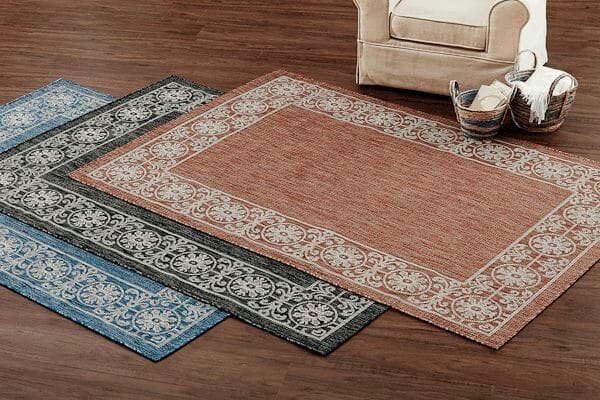
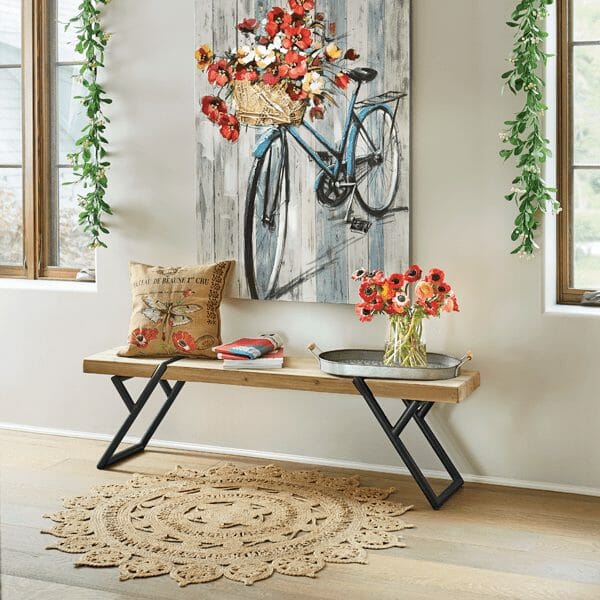
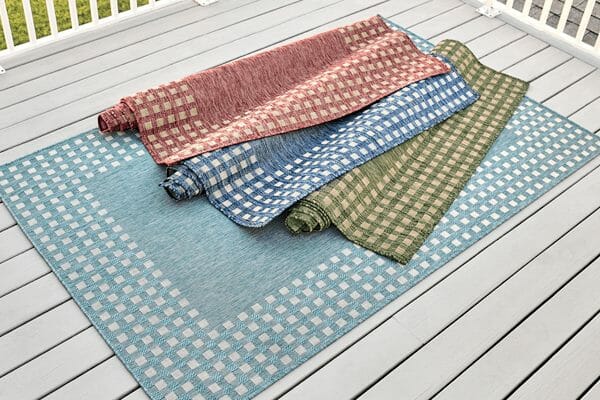
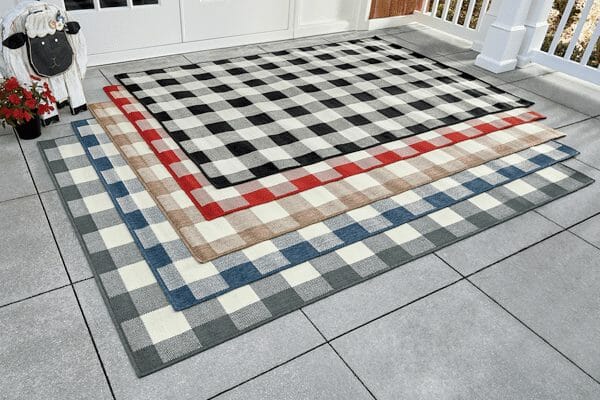
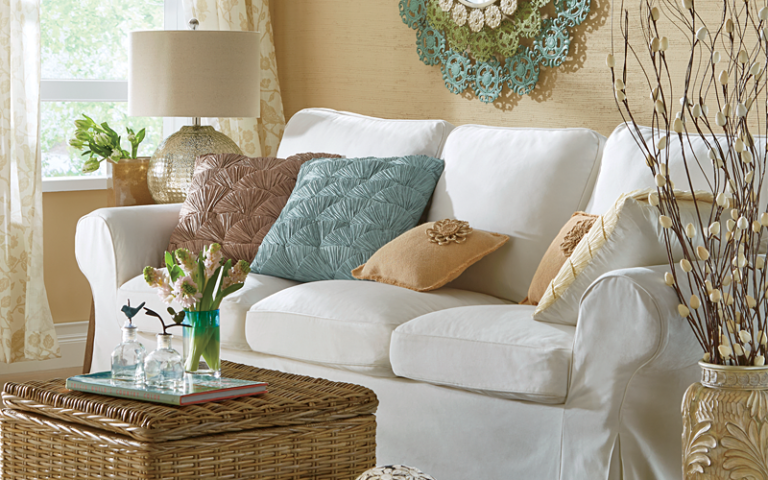
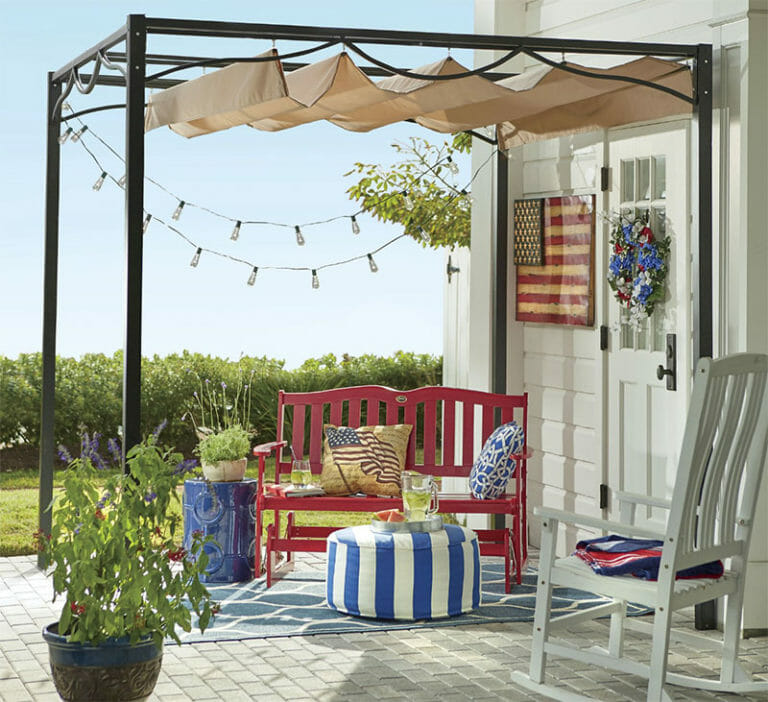
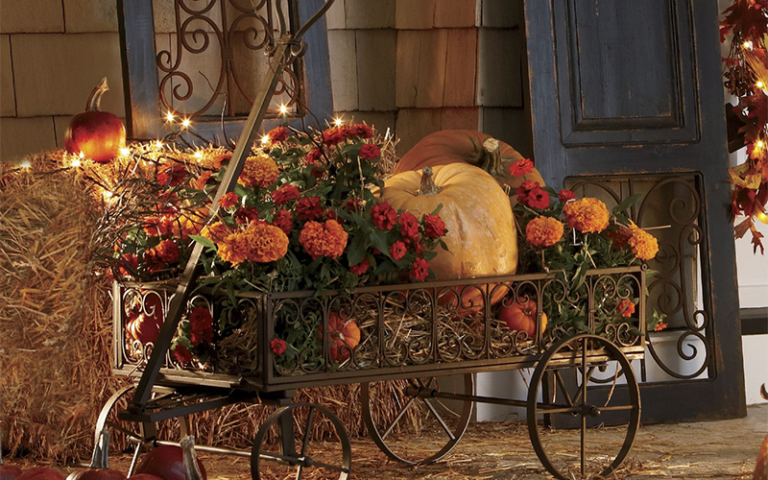
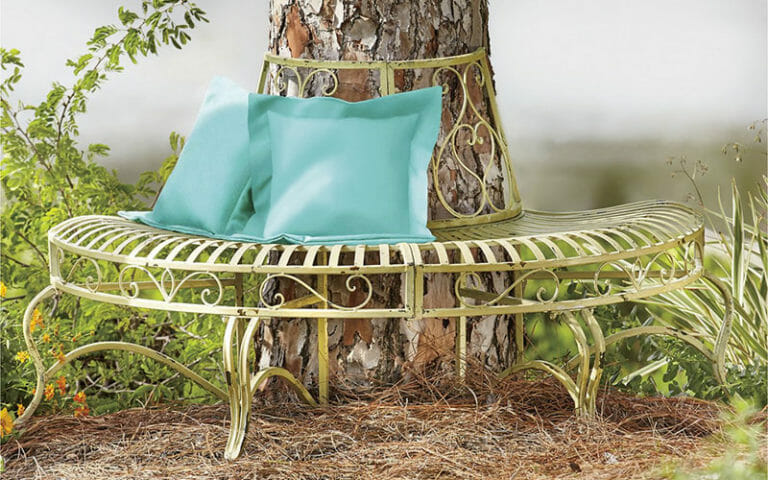
Comments (6)
Bridget Richards
Can you tell us which items are made in the USA in your catalog? We no longer want to buy anything from China
Kathie howard
Where is my catalog been waiting since December
Country Door
Hello Kathie,
Please follow this link to sign up for our catalogs: https://www.countrydoor.com/cm/catalog-request/ or shop online at https://www.countrydoor.com/
Warmest Wishes,
The Country Door Team
Nancy Berg
Love this feature, but could you also include the room size or area size where furniture pieces are placed.
Country Door
Hi Nancy,
Thanks for commenting – We’ve passed your request onto our writer to see if we can get that updated!
Claire. Salsman
great ideas to use in your new homes. I liked the throw rugs and area rugs.